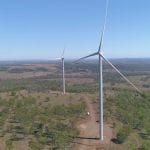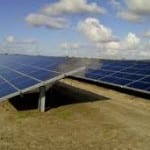Around The Web
Albert Einstein's 'God letter' expected to sell for $1.5m
View from The Hill: Malcolm Turnbull and his NEG continue to haunt the government
Research worms 'too old' to go to space station
'Our leaders are like children,' school strike founder tells climate summit
Greta Thunberg, 15, told UN summit that students are acting in absence of global leadership
Action to fight global warming is coming whether world leaders like it or not, school student Greta Thunberg has told the UN climate change summit, accusing them of behaving like irresponsible children.
Thunberg began a solo climate protest by striking from school in Sweden in August. But more than 20,000 students around the world have now joined her. The school strikes have spread to at least 270 towns and cities in countries across the world, including Australia, the United Kingdom, Belgium, the US and Japan.
Continue reading...COP24: UN secretary-general details 2019 summit to raise climate ambition
Capturing Ecology: British Ecological Society photo competition – in pictures
The BES photography contest features images by ecologists and students and captures rare flora and fauna from around the world. The overall winning picture, by Chris Oosthuizen, shows an adult king penguin surrounded by chicks on Marion Island
Continue reading...Home battery storage subsidies and support schemes: What’s available and where
 A stocktake of which governments are now offering programs to bolster the uptake of home battery storage in Australia.
A stocktake of which governments are now offering programs to bolster the uptake of home battery storage in Australia.
The post Home battery storage subsidies and support schemes: What’s available and where appeared first on RenewEconomy.
EV car parks could provide more storage than Tesla big battery
 Macquarie Uni researcher claims car parks in an EV future have the potential to become power plants bigger than South Australia's Tesla big battery.
Macquarie Uni researcher claims car parks in an EV future have the potential to become power plants bigger than South Australia's Tesla big battery.
The post EV car parks could provide more storage than Tesla big battery appeared first on RenewEconomy.
Kia unveils new all-electric Soul at LA Auto Show
 A new Kia electric car and updated Niro unveiled by South Korean carmaker Kia as they prepare for launch in Europe and North America.
A new Kia electric car and updated Niro unveiled by South Korean carmaker Kia as they prepare for launch in Europe and North America.
The post Kia unveils new all-electric Soul at LA Auto Show appeared first on RenewEconomy.
Court challenge launched over minister's 'flawed' decision on Adani water trigger
Melissa Price made an error of law in assessing pipeline plan, Australian Conservation Foundation will argue
The Australian Conservation Foundation has launched a federal court challenge to the environment minister Melissa Price’s decision not to apply the water trigger in assessing water infrastructure for Adani’s Carmichael coalmine.
The court action, lodged on Tuesday, relates to the federal government’s assessment of Adani’s north Galilee water scheme, which would see a 100km pipeline constructed to transport 12.5bn litres of water a year from the Suttor River and Burdekin basin. The project would also expand an existing 2.2bn-litre dam to 10bn litres.
Continue reading...Here's the seafood Australians eat (and what we should be eating)
Goanna set to soak up the sun and put power back into the hands of Australian households
 The introduction of a new solar battery will put Australians one step closer to achieving the dream of a $0 electricity bill.
The introduction of a new solar battery will put Australians one step closer to achieving the dream of a $0 electricity bill.
The post Goanna set to soak up the sun and put power back into the hands of Australian households appeared first on RenewEconomy.
First turbines up and spinning at Australia’s largest wind farm
 Some of the massive 67m turbine blades delivered to the 453MW Coopers Gap Wind Farm in Queensland in September are now up and and ready to spin.
Some of the massive 67m turbine blades delivered to the 453MW Coopers Gap Wind Farm in Queensland in September are now up and and ready to spin.
The post First turbines up and spinning at Australia’s largest wind farm appeared first on RenewEconomy.
Know your NEM: Angus Taylor should go to naughty corner over terrible policy
 The federal Coalition is systematically undermining the basis of the private ownership of the electricity market in Australia. Legal rights are being cut back at every turn.
The federal Coalition is systematically undermining the basis of the private ownership of the electricity market in Australia. Legal rights are being cut back at every turn.
The post Know your NEM: Angus Taylor should go to naughty corner over terrible policy appeared first on RenewEconomy.
West Mersea mammoth tusk 'dates back 12,000 years'
RCR administrators move to close down solar business
 Administrators of RCR Tomlinson move to extract the contracting and engineering giant from the solar business that appears to have torpedoed the company's finances.
Administrators of RCR Tomlinson move to extract the contracting and engineering giant from the solar business that appears to have torpedoed the company's finances.
The post RCR administrators move to close down solar business appeared first on RenewEconomy.
ACT to trial up to 100% green hydrogen in gas network, in Australian first
 Canberra Institute of Technology and ACT network operator Evoenergy will test up to 100% hydrogen across grid in situations where natural gas currently used.
Canberra Institute of Technology and ACT network operator Evoenergy will test up to 100% hydrogen across grid in situations where natural gas currently used.
The post ACT to trial up to 100% green hydrogen in gas network, in Australian first appeared first on RenewEconomy.
Turnbull: I gave it my best shot … but deniers won’t accept renewables are cheaper
 Turnbull says renewables and storage clearly cheaper than coal, even if ideologues and idiots deny that fact, and can lower emissions as well as cut costs. So should we decarbonise more quickly? Ah, no.
Turnbull says renewables and storage clearly cheaper than coal, even if ideologues and idiots deny that fact, and can lower emissions as well as cut costs. So should we decarbonise more quickly? Ah, no.
The post Turnbull: I gave it my best shot … but deniers won’t accept renewables are cheaper appeared first on RenewEconomy.



